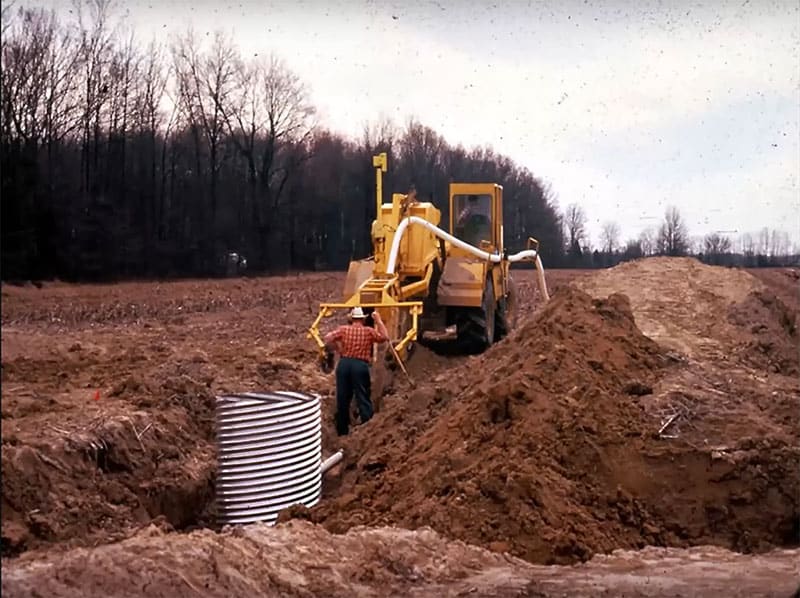Drainage for the Long Haul – 35 years of Drainage Data in Indiana
Research Published: June 2020
Drainage is a long-term investment with performance being more or less effective in a given year based on many environmental factors but tends to average out over the years. Purdue University installed drainage systems in their plots in the early 1980’s and has been gathering data since. This study gives us one of the most complete long-term analyses of the role that drainage and drain spacing plays in planting date, crop yield, drain flow, nitrate loss, and cover crop effectiveness. Purdue has summarized data and results from this site in multiple summary documents and explanatory videos.
The Takeaway
This long-term study highlights the typical benefits of tile drainage: Earlier field operations, higher yields, healthier soils, etc.; but more interestingly, it shows the role that drainage plays while implementing other agronomic and conservation practices.
The drained plots not only out-performed the undrained plots in row crop yield, but they also proved that a proper drainage system is especially beneficial when implementing cover crops, no-till, nitrogen application management, and other conservation practices. By having a wholistic approach to nutrient management, the study showed that it’s possible to significantly reduce outflow nitrate concentrations.
The Site & Testing
In 1983, the drainage system was installed in a poorly drained, silty clay loam soil in Southeast Indiana near Butlerville. The system was broken into sections with lateral spacings of 16’, 33’, 66’, & 132’ at depths of 2.5- to 3-feet. The plots were planted to continuous corn for the first 10 years, then began implementing more rotations and variety in 1994 such as corn-soybean rotations with cover crops and no-till. Through 2018, measurements and data were taken for farming practices & timing, crop yield, rainfall, drainage volume, and Nitrate-N concentrations in the tile drainage system.
The Results
Some of the commonly understood outcomes of conventional drainage were upheld in this study including earlier field operations (up to 15 days) and an increase in corn yield (up to 24bu/ac with higher yields expected in typical field-scale farming operations). Also, tighter drain spacing results in more water leaving the site, so with consistent concentrations, higher annual Nitrate-N loading was seen with tighter spacing.
Some of the most interesting data in this study came as the farming operations transitioned from continuous corn to a corn-soybean rotation and incorporating cover crops and no-till. These conservation practices were able to be maximized (higher yielding cover crop biomass) in the drained plots which led to a drastic decrease in Nitrate-N loading in the tile water. Concentrations were up to 35mg/liter in the continuous corn years, and were reduced to consistently below the drinking water standard of 10mg/liter from 1996 on (conservation practices starting in 1994) while corn yield continued to trend upward.
Citation(s)
Eileen Kladlvko. (2020). Drainage for the long haul: Key takeaways from the SEPAC Study. West Lafayette, Indiana; Purdue University.
Eileen Kladlvko. (2020). Soil drainage and crop yields: Insights from long-term SEPAC Study. West Lafayette, Indiana; Purdue University.
Eileen Kladlvko. (2020). Soil drainage impacts on cover crop growth and soil improvement: Insights from long-term SEPAC Study. West Lafayette, Indiana; Purdue University.
Eileen Kladlvko. (2020). Soil drainage and nitrate losses to surface waters: Insights from long-term SEPAC Study. West Lafayette, Indiana; Purdue University.
